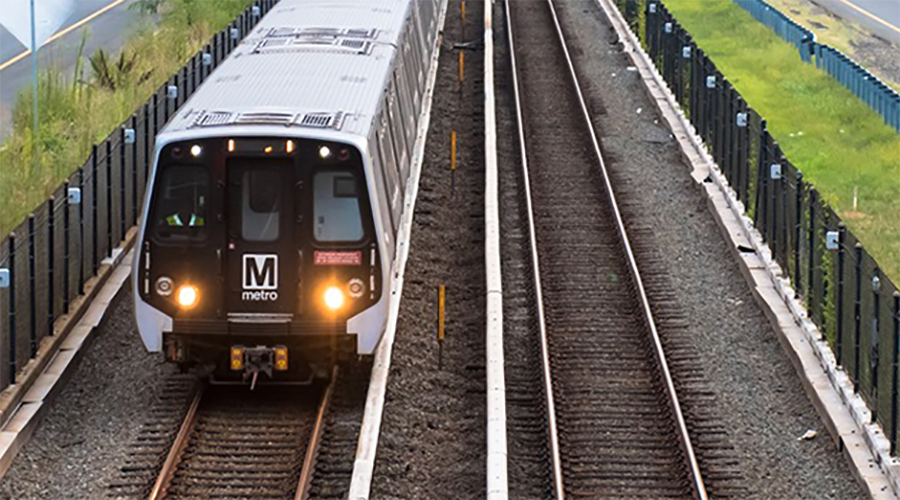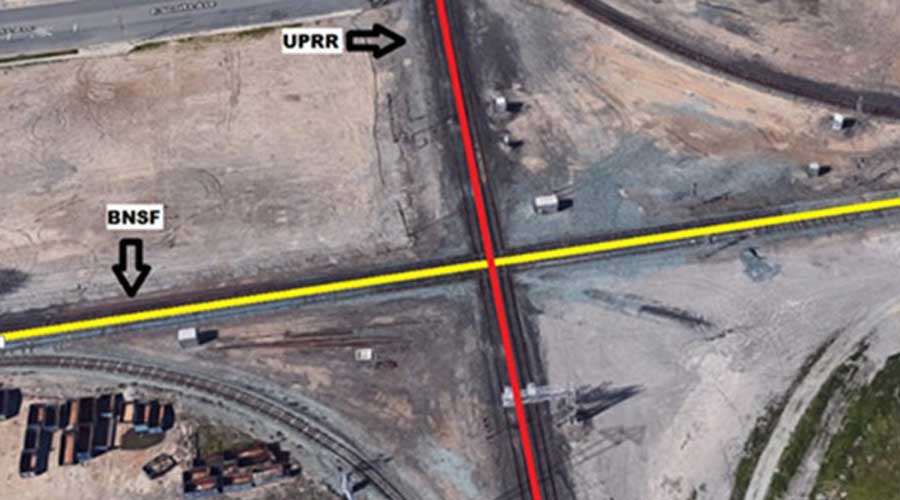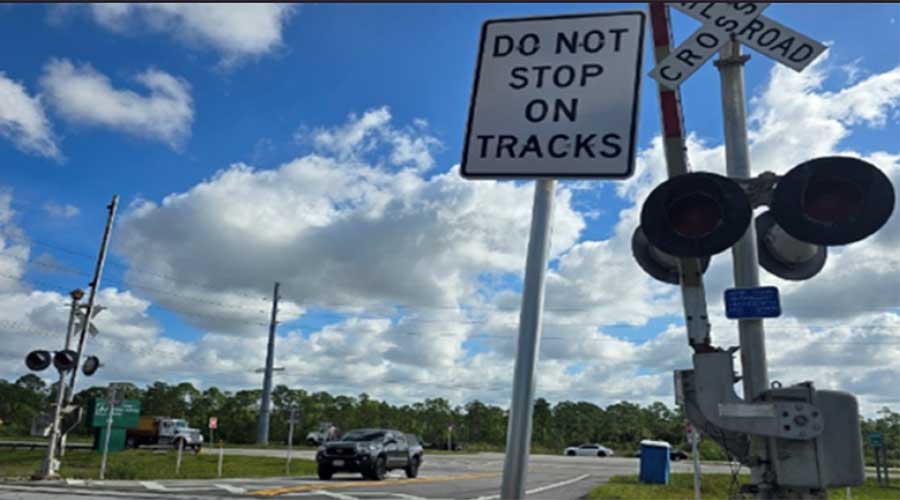Newsletter Sign Up
Stay updated on news, articles and information for the rail industry
Stay updated on news, articles and information for the rail industry
RAIL EMPLOYMENT & NOTICES
Rail News Home
High-Speed Rail
Rail News: High-Speed Rail
9/29/2010
Rail News: High-Speed Rail
U.S. DOT releases National Rail Plan progress report
advertisement
Yesterday, the U.S. Department of Transportation (USDOT) released an update of the National Rail Plan in a report titled Moving Forward: A Progress Report.
The report builds on the Preliminary National Rail Plan that was mandated by the Passenger Rail Investment and Improvement Act of 2008 and submitted to Congress in October 2009. It outlines the numerous factors — past, present and future — that make the case for improving rail infrastructure.
“America’s economic vitality has been driven by investments in transportation,” said U.S. Transportation Secretary Ray LaHood in a prepared statement. “Giving rail a greater role in our national transportation system will help us meet the 21st century challenges of population growth, increasing energy costs, reducing carbon emissions and ensuring the nation remains competitive in the global economy.”
Among the findings: Current demographic analyses and forecasts anticipate continued population growth, especially in urban areas. Coupled with a corresponding increase in freight shipments, such growth will place additional burdens on transportation systems that are already working at or beyond capacity. The resulting traffic congestion translates into lost productivity that not only negatively impacts commerce, but degrades quality of life.
Also included in the report is a vision for high-speed intercity passenger rail. That vision calls for developing “tiered passenger rail corridors that take into account the different markets and geographic contexts found throughout the United States,” according to the report. “This approach builds on the legislative framework established in the Passenger Rail Investment and Improvement Act of 2008 and $8 billion provided in the American Recovery and Reinvestment Act of 2009.”
Tiers included in FRA’s vision are:
• Core Express Corridors, which would connect large urban areas up to 500 miles apart with two- to three-hour travel times and train speeds between 125 mph and 250 mph on electrified, dedicated, publicly owned track;
• Regional Corridors, which would connect mid-sized urban areas and smaller communities in between with convenient, frequent 90-125 mph service on a mix of dedicated and shared track, depending on the corridor and could connect to Core Express Corridors;
• Emerging/Feeder Routes, which would connect regional urban areas at speeds up to 90 mph on shared track and could connect to the Core Express or Regional corridors in some areas; and
• Community Connections, which would integrate new, high-speed service with existing and future policies and investments in public transportation to provide convenient options for accessing the passenger-rail network.
USDOT is developing criteria to identify regions of the country where Core Express, Regional and Emerging/Feeder corridors could be feasible. Criteria could include estimated trip times, highway and airport congestion, ridership estimates, distance and other cost and benefit measures.
Once completed, the National Rail Plan will establish the framework necessary to begin laying a foundation that will improve the transportation network.
“Ensuring higher-performing freight and passenger rail systems is the key to integrating surface, air and waterway transport,” said Federal Railroad Administrator Joseph Szabo, adding that “a balanced and fully interconnected transportation network allows for the safe, efficient and seamless movement of people and goods.”
To download a copy of the report, click here, then follow the link at the bottom of the press release.
The report builds on the Preliminary National Rail Plan that was mandated by the Passenger Rail Investment and Improvement Act of 2008 and submitted to Congress in October 2009. It outlines the numerous factors — past, present and future — that make the case for improving rail infrastructure.
“America’s economic vitality has been driven by investments in transportation,” said U.S. Transportation Secretary Ray LaHood in a prepared statement. “Giving rail a greater role in our national transportation system will help us meet the 21st century challenges of population growth, increasing energy costs, reducing carbon emissions and ensuring the nation remains competitive in the global economy.”
Among the findings: Current demographic analyses and forecasts anticipate continued population growth, especially in urban areas. Coupled with a corresponding increase in freight shipments, such growth will place additional burdens on transportation systems that are already working at or beyond capacity. The resulting traffic congestion translates into lost productivity that not only negatively impacts commerce, but degrades quality of life.
Also included in the report is a vision for high-speed intercity passenger rail. That vision calls for developing “tiered passenger rail corridors that take into account the different markets and geographic contexts found throughout the United States,” according to the report. “This approach builds on the legislative framework established in the Passenger Rail Investment and Improvement Act of 2008 and $8 billion provided in the American Recovery and Reinvestment Act of 2009.”
Tiers included in FRA’s vision are:
• Core Express Corridors, which would connect large urban areas up to 500 miles apart with two- to three-hour travel times and train speeds between 125 mph and 250 mph on electrified, dedicated, publicly owned track;
• Regional Corridors, which would connect mid-sized urban areas and smaller communities in between with convenient, frequent 90-125 mph service on a mix of dedicated and shared track, depending on the corridor and could connect to Core Express Corridors;
• Emerging/Feeder Routes, which would connect regional urban areas at speeds up to 90 mph on shared track and could connect to the Core Express or Regional corridors in some areas; and
• Community Connections, which would integrate new, high-speed service with existing and future policies and investments in public transportation to provide convenient options for accessing the passenger-rail network.
USDOT is developing criteria to identify regions of the country where Core Express, Regional and Emerging/Feeder corridors could be feasible. Criteria could include estimated trip times, highway and airport congestion, ridership estimates, distance and other cost and benefit measures.
Once completed, the National Rail Plan will establish the framework necessary to begin laying a foundation that will improve the transportation network.
“Ensuring higher-performing freight and passenger rail systems is the key to integrating surface, air and waterway transport,” said Federal Railroad Administrator Joseph Szabo, adding that “a balanced and fully interconnected transportation network allows for the safe, efficient and seamless movement of people and goods.”
To download a copy of the report, click here, then follow the link at the bottom of the press release.


 2025 MOW Spending Report: Passenger-rail programs
2025 MOW Spending Report: Passenger-rail programs
 Gardner steps down as Amtrak CEO
Gardner steps down as Amtrak CEO
 Guest comment: Oliver Wyman’s David Hunt
Guest comment: Oliver Wyman’s David Hunt
 Women of Influence in Rail eBook
Women of Influence in Rail eBook
 railPrime
railPrime








